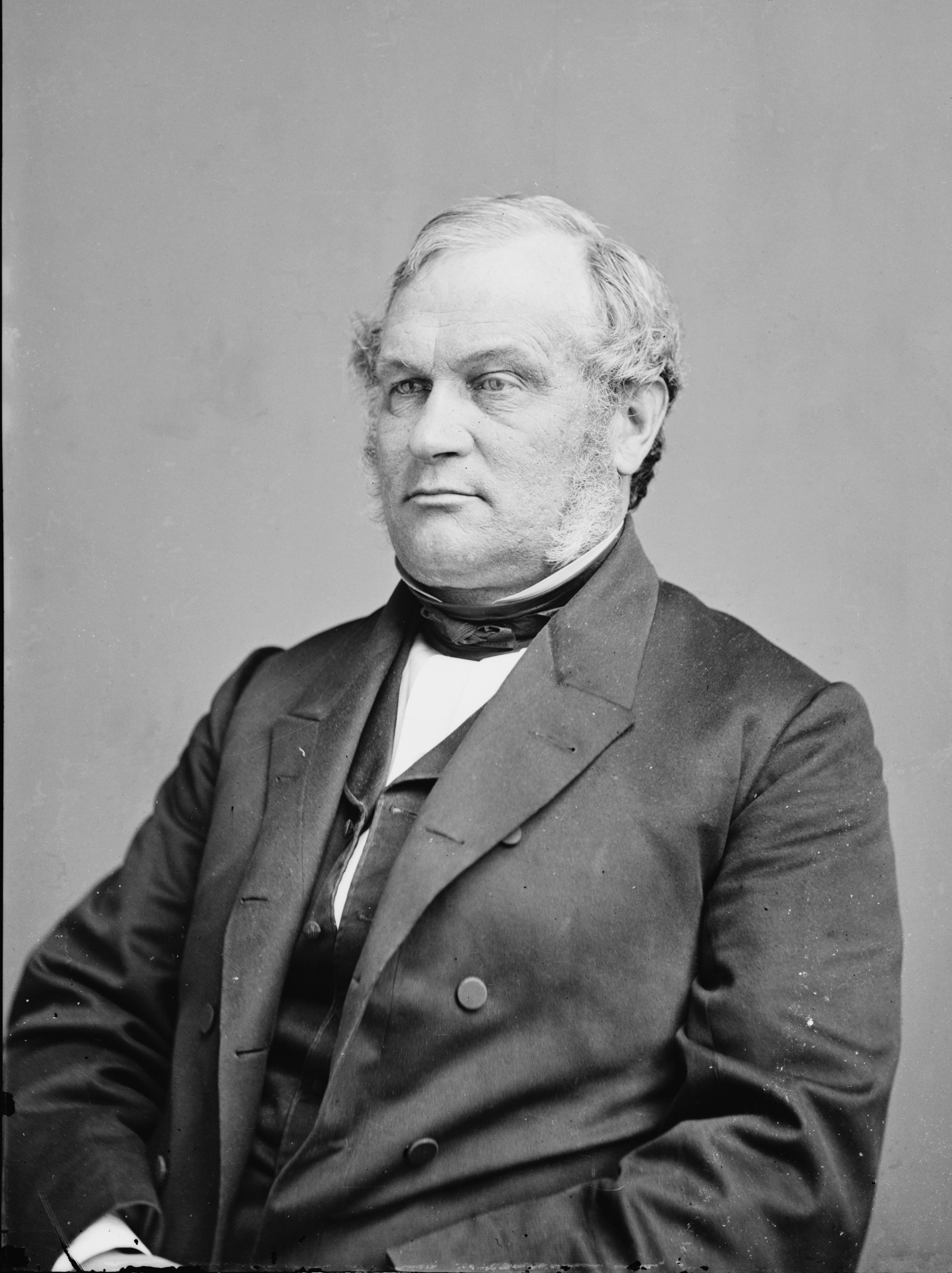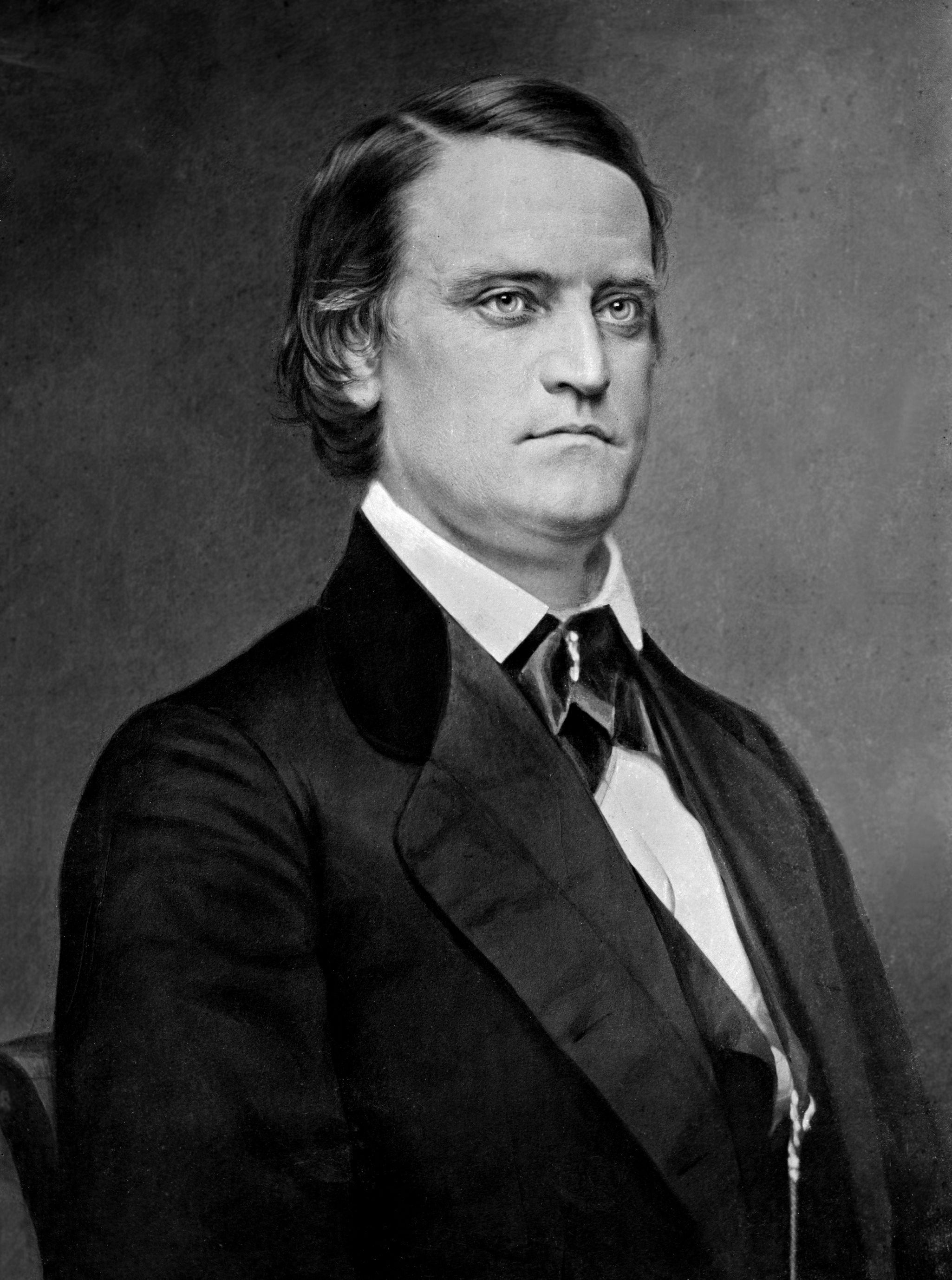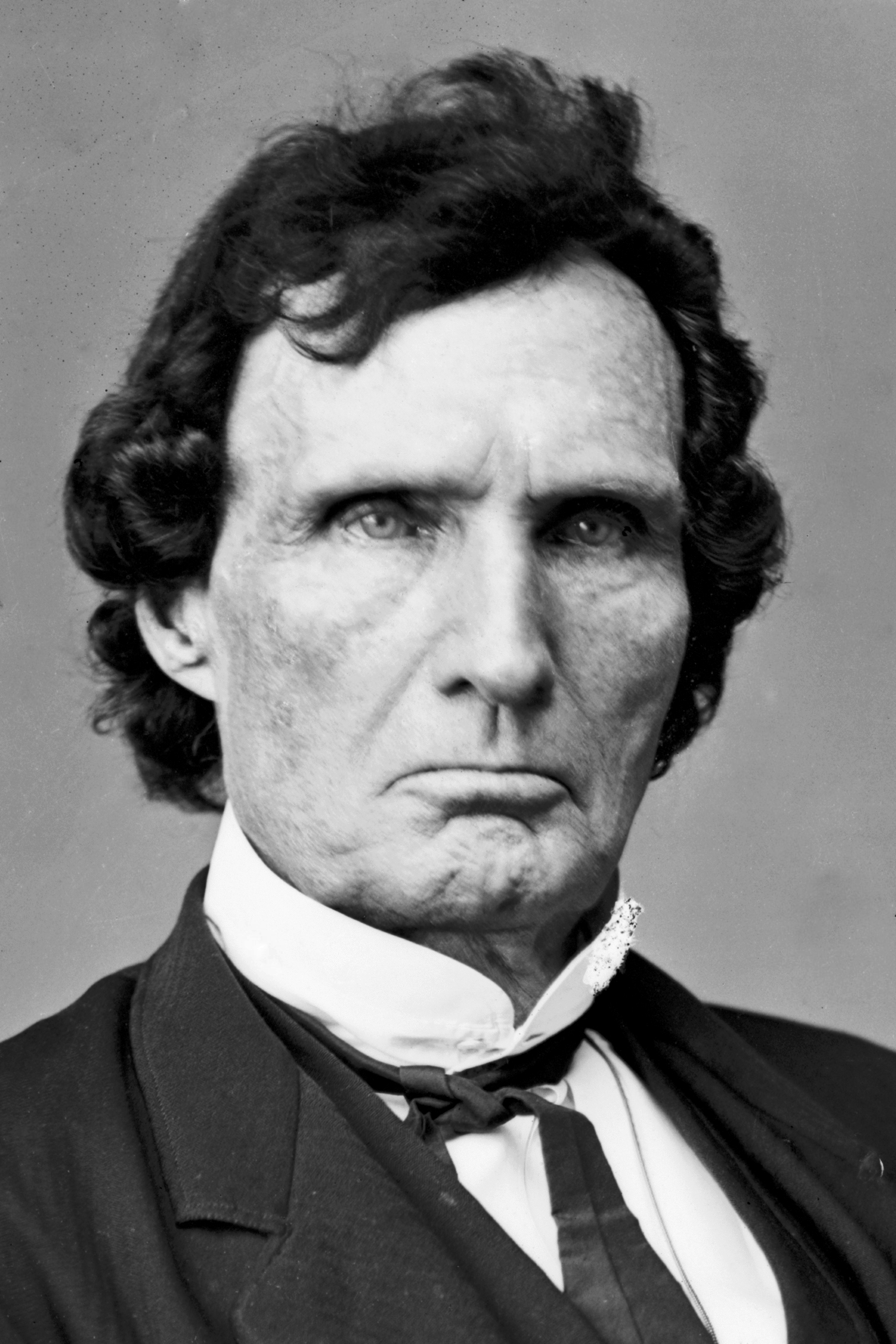|
Morton Smith Wilkinson
Morton Smith Wilkinson (January 22, 1819February 4, 1894) was an American politician. Biography Born in Skaneateles, New York, he moved to Illinois in 1837 and was employed in railroad work for two years. Upon returning to Skaneateles in 1840, he studied law, was admitted to the bar in 1842, and commenced practice in Eaton Rapids, Michigan in 1843. He moved to Stillwater, Minnesota in 1847. Wilkinson was elected to the first legislature of Minnesota Territory in 1849 and served as Register of Deeds of Ramsey County 1851 – 1853. After moving to Mankato, Minnesota in 1858, he served as a member of the board of commissioners to prepare a code of laws for the Territory of Minnesota in 1858. After winning the 1859 Senate election in Minnesota he served in the United States Senate from March 4, 1859 to March 3, 1865, as a Republican from Minnesota, in the 36th, 37th and 38th congresses, but was an unsuccessful candidate for reelection. In the Senate, he was chairman of th ... [...More Info...] [...Related Items...] OR: [Wikipedia] [Google] [Baidu] |
Minnesota
Minnesota ( ) is a U.S. state, state in the Upper Midwestern region of the United States. It is bordered by the Canadian provinces of Manitoba and Ontario to the north and east and by the U.S. states of Wisconsin to the east, Iowa to the south, and North Dakota and South Dakota to the west. It is the List of U.S. states and territories by area, 12th-largest U.S. state in area and the List of U.S. states and territories by population, 22nd-most populous, with about 5.8 million residents. Minnesota is known as the "Land of 10,000 Lakes"; it has 14,420 bodies of fresh water covering at least ten acres each. Roughly a third of the state is Forest cover by state and territory in the United States, forested. Much of the remainder is prairie and farmland. More than 60% of Minnesotans (about 3.71 million) live in the Minneapolis–Saint Paul metropolitan area, known as the "Twin Cities", which is Minnesota's main Politics of Minnesota, political, Economy of Minnesota, economic, and C ... [...More Info...] [...Related Items...] OR: [Wikipedia] [Google] [Baidu] |
Minnesota Territory
The Territory of Minnesota was an organized incorporated territory of the United States that existed from March 3, 1849, until May 11, 1858, when the eastern portion of the territory was admitted to the Union as the state of Minnesota and the western portion became unorganized territory and shortly after was reorganized as part of the Dakota Territory. History The Minnesota Territory was formed on March 3, 1849, encompassing the entirety of the present-day state of Minnesota and the majority portions of modern-day North and South Dakota east of the Missouri and White Earth Rivers. At the time of formation there were an estimated 5,000 settlers living in the Territory. There were no roads from adjoining Wisconsin or Iowa. The easiest access to the region was via waterway, of which the Mississippi River was primary. The primary mode of transport was the riverboat. Minnesota Territory had three significant pioneer settlements: St. Paul, St. Anthony/Minneapolis, and Stil ... [...More Info...] [...Related Items...] OR: [Wikipedia] [Google] [Baidu] |
Henry Mower Rice
Henry Mower Rice (November 29, 1816January 15, 1894) was a fur trader and an American politician prominent in the statehood of Minnesota. Early life Henry Rice was born on November 29, 1816, in Waitsfield, Vermont to Edmund Rice and Ellen (Durkee) Rice. Both Edmund and Ellen were of entirely English ancestry; their ancestors had been in New England since the early 1600s. Rice lived with family friends from an early age due to the death of his father. When Rice was 18, he moved to Detroit, Michigan, and participated in the surveying of the canal route around the rapids of Sault Ste. Marie between Lake Superior and Lake Huron. In 1839 Rice secured a job at Fort Snelling, near what is now Minneapolis, Minnesota. He became a fur trader with the Ho-Chunk and Chippewa (Ojibwe) Indians, attaining a position of prominence and influence. Rice was trusted by the Indians, and he was instrumental in negotiating the United States treaty with the Ojibwe Indians in 1847 by which they ceded ... [...More Info...] [...Related Items...] OR: [Wikipedia] [Google] [Baidu] |
Faribault County, Minnesota
Faribault County ( ) is a county in the U.S. state of Minnesota. As of the 2020 census, the population was 13,921. Its county seat is Blue Earth. History The county was founded in 1855. It was named for Jean-Baptiste Faribault, a settler and French fur trader among the Sioux Indians. Geography Faribault County lies on the south side of Minnesota. Its southern border abuts the north border of the state of Iowa. The Blue Earth River flows northerly through the west-central part of the county; it enters from Iowa as two branches, West Branch and Middle Branch, merging at into the county. It is joined by East Branch near the city of Blue Earth, thence flows northward into Blue Earth County. The Maple River flows west-northwestward through the upper central part of the county, entering from Freeborn County and exiting to Blue Earth County. The Cobb River also flows through the NE part of the county, from Freeborn to Blue Earth county. The county terrain consists of semi-ari ... [...More Info...] [...Related Items...] OR: [Wikipedia] [Google] [Baidu] |
Minnesota State Senate
The Minnesota Senate is the upper house of the Legislature of the U.S. state of Minnesota. At 67 members, half as many as the Minnesota House of Representatives, it is the largest upper house of any U.S. state legislature. Floor sessions are held in the west wing of the State Capitol in Saint Paul. Committee hearings, as well as offices for senators and staff, are located north of the State Capitol in the Minnesota Senate Building. Each member of the Minnesota Senate represents approximately 80,000 constituents. History The Minnesota Senate held its first regular session on December 2, 1857. Powers In addition to its legislative powers, certain appointments by the governor are subject to the Senate's advice and consent. As state law provides for hundreds of executive appointments, the vast majority of appointees serve without being confirmed by the Senate; only in rare instances does the Senate reject appointees. It has rejected only nine executive appointments since 2000. Ele ... [...More Info...] [...Related Items...] OR: [Wikipedia] [Google] [Baidu] |
Wells, Minnesota
Wells is a city in Faribault County, Minnesota, United States. The population was 2,343 at the 2010 census. History Wells was laid out in 1869. The city was named for J.W. Wells, father in law of Clark W. Thompson. The city contains a property listed on the National Register of Historic Places: the former Chicago, Milwaukee, St. Paul and Pacific Depot and Lunchroom. Geography According to the United States Census Bureau, the city has a total area of , all land. Minnesota State Highways 22 and 109 are two of the main routes in the city. Interstate 90 is located six miles south of Wells on Highway 22. Climate Demographics 2010 census As of the census of 2010, there were 2,343 people, 1,013 households, and 635 families living in the city. The population density was . There were 1,133 housing units at an average density of . The racial makeup of the city was 96.9% White, 0.2% African American, 0.2% Native American, 0.8% Asian, 0.9% from other races, and 1.1% from t ... [...More Info...] [...Related Items...] OR: [Wikipedia] [Google] [Baidu] |
United States House Of Representatives
The United States House of Representatives is a chamber of the Bicameralism, bicameral United States Congress; it is the lower house, with the U.S. Senate being the upper house. Together, the House and Senate have the authority under Article One of the United States Constitution, Article One of the Constitution of the United States, U.S. Constitution to pass or defeat federal legislation, known as Bill (United States Congress), bills. Those that are also passed by the Senate are sent to President of the United States, the president for signature or veto. The House's exclusive powers include initiating all revenue bills, Impeachment in the United States, impeaching federal officers, and Contingent election, electing the president if no candidate receives a majority of votes in the United States Electoral College, Electoral College. Members of the House serve a Fixed-term election, fixed term of two years, with each seat up for election before the start of the next Congress. ... [...More Info...] [...Related Items...] OR: [Wikipedia] [Google] [Baidu] |
Committee On Revolutionary Claims
A committee or commission is a body of one or more persons subordinate to a deliberative assembly or other form of organization. A committee may not itself be considered to be a form of assembly or a decision-making body. Usually, an assembly or organization sends matters to a committee as a way to explore them more fully than would be possible if the whole assembly or organization were considering them. Committees may have different functions and their types of work differ depending on the type of organization and its needs. A member of a legislature may be delegated a committee assignment, which gives them the right to serve on a certain committee. Purpose A deliberative assembly or other organization may form a committee (or "commission") consisting of one or more persons to assist with the work of the assembly. For larger organizations, much work is done in committees. They can be a way to formally draw together people of relevant expertise from different parts of an organi ... [...More Info...] [...Related Items...] OR: [Wikipedia] [Google] [Baidu] |
38th United States Congress
The 38th United States Congress was a meeting of the legislative branch of the United States federal government, consisting of the United States Senate and the United States House of Representatives. It met in Washington, D.C., from March 4, 1863, to March 4, 1865, during the last two years of President of the United States, President Abraham Lincoln's first Presidency of Abraham Lincoln, term in office. The apportionment of seats in the United States House of Representatives, House of Representatives was based on the 1860 United States census. The United States Senate, Senate had a Republican Party of the United States, Republican majority, and the United States House of Representatives, House of Representatives had a Republican Party of the United States, Republican plurality; Republicans controlled the House by sharing a coalition with Unconditional Union Party, Unconditional Unionists. Major events * American Civil War, which had started in 1861, continued through this Congre ... [...More Info...] [...Related Items...] OR: [Wikipedia] [Google] [Baidu] |
37th United States Congress
The 37th United States Congress was a meeting of the legislative branch of the United States federal government, consisting of the United States Senate and the United States House of Representatives. It met in Washington, D.C., from March 4, 1861, to March 4, 1863, during the first two years of Abraham Lincoln's Presidency of Abraham Lincoln, presidency. * May 20, 1861: North Carolina Secession Convention enacted an Ordinance of Secession. * May 23, 1861: Virginia popular referendum ratified Ordinance of Secession. 5 of 12 U.S. Representatives remained. Two senators from the "Restored Government of Virginia" replaced the two who withdrew. * June 8, 1861: Tennessee popular referendum ratified Ordinance of Secession. 3 of 10 U.S. Representatives remain. One Senator, Andrew Johnson, remained. * July 21, 1861: First Battle of Bull Run Union approach to Richmond is repulsed. * September 17, 1862: Battle of Antietam rebel invasion into Maryland is repulsed. * September 22, 1862: Emancipa ... [...More Info...] [...Related Items...] OR: [Wikipedia] [Google] [Baidu] |
36th United States Congress
The 36th United States Congress was a meeting of the legislative branch of the United States federal government, consisting of the United States Senate and the United States House of Representatives. It met in Washington, D.C. from March 4, 1859, to March 4, 1861, during the third and fourth years of James Buchanan's Presidency of James Buchanan, presidency. The apportionment of seats in the United States House of Representatives, House of Representatives was based on the 1850 United States census. The Senate had a Democratic Party (United States), Democratic majority, and the House had a Republican Party (United States), Republican plurality. Major events * June 8, 1859: Comstock Lode discovered in the western Utah Territory (present-day Nevada) * August 27, 1859: First oil well was drilled in the United States, near Titusville, Pennsylvania * October 16–18, 1859: John Brown's raid on Harpers Ferry * December 2, 1859 John Brown (abolitionist), John Brown executed. * Decembe ... [...More Info...] [...Related Items...] OR: [Wikipedia] [Google] [Baidu] |
United States Republican Party
The Republican Party, also known as the Grand Old Party (GOP), is a Right-wing politics, right-wing political parties in the United States, political party in the United States. One of the Two-party system, two major parties, it emerged as the main rival of the then-dominant Democratic Party (United States), Democratic Party in the 1850s, and the two parties have dominated American politics since then. The Republican Party was founded in 1854 by anti-slavery activists opposing the Kansas–Nebraska Act and the expansion of slavery in the United States, slavery into U.S. territories. It rapidly gained support in the Northern United States, North, drawing in former Whig Party (United States), Whigs and Free Soil Party, Free Soilers. Abraham Lincoln's 1860 United States presidential election, election in 1860 led to the secession of Southern states and the outbreak of the American Civil War. Under Lincoln and a Republican-controlled Congress, the party led efforts to preserve th ... [...More Info...] [...Related Items...] OR: [Wikipedia] [Google] [Baidu] |






